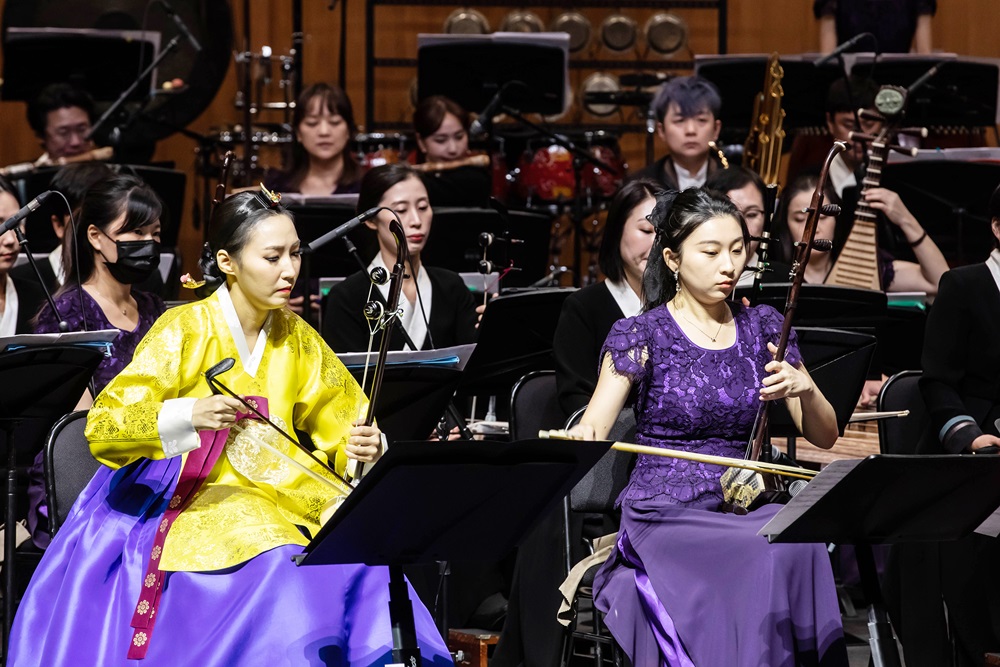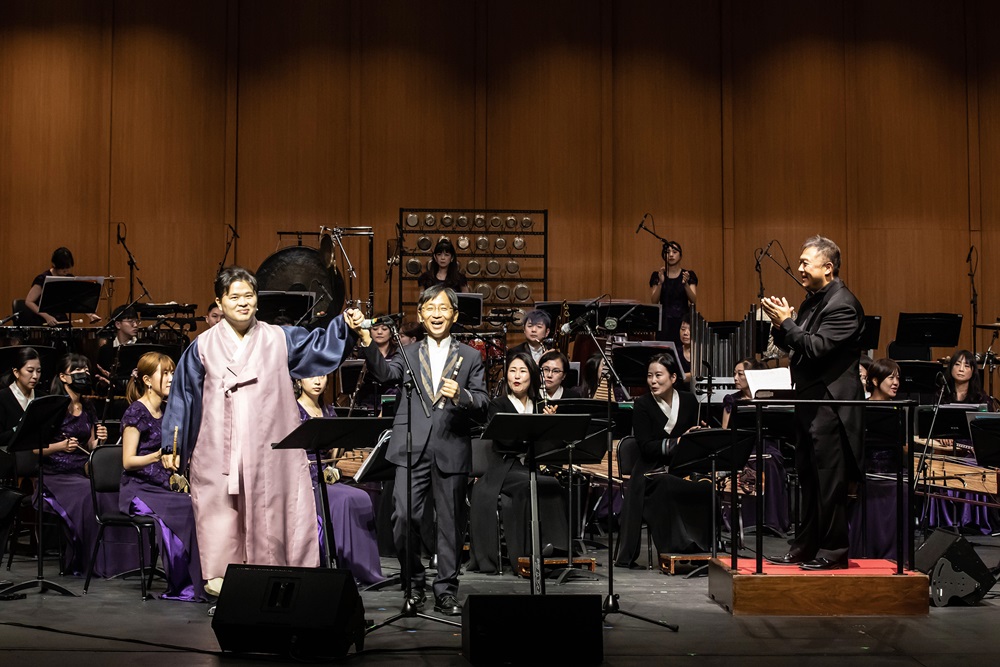- 한국어
- English
- 日本語
- 中文
- العربية
- Español
- Français
- Deutsch
- Pусский
- Tiếng Việt
- Indonesian

The Contemporary Gugak Orchestra under the National Gugak Center in Seoul's Seocho-gu District and the National Chinese Orchestra Taiwan of the National Center for Traditional Arts from Taiwan on Nov. 10 hold the joint concert "Hwa Ee Boo Dong" at the National Gugak Center.
By Xu Aiying
Photos = National Gugak Center
The loud and deep sound of the haegeum (traditional vertical fiddle) and the light and soft melody of the erhu (two-stringed bow) might be similar in appearance but have different materials and playing techniques. They can still produce harmony on the same stage, however.
The Contemporary Gugak Orchestra under the National Gugak Center in Seoul's Seocho-gu District and the National Chinese Orchestra Taiwan of the National Center for Traditional Arts in Taiwan on Nov. 10 held the joint concert "Hwa Ee Boo Dong" at the National Gugak Center.
The event promoted bilateral exchange by bringing both orchestras on stage as one group. The haegeum and the erhu, along with the Korean piri (cylindrical double-reed bamboo oboe) and the guan (double reed wind instrument), gave a glimpse into the charm of these two similar yet different traditional instruments.
Composed by the Taiwanese side specifically for this performance, the piece "Vive les Percussions!" combined Korean samulnori (traditional percussion music) and traditional Taiwanese percussion to mark the grand finale of the performance.
"The music of both countries are different but give birth to new harmony when combined," the Taiwanese orchestra's director Liu Li-chen told a news conference before the concert. "Through this exchange performance, I hope we understand each other's musical traits and appeal and appreciate artistic expression."

Piri (cylindrical double-reed bamboo oboe) player Lim Kyu-soo (left), and guan (double reed wind instrument) player Tsui Chou-shun on Nov. 10 respond to audience applause after their performance at the "Hwa Ee Boo Dong" concert at the National Gugak Center in Seoul's Seocho-gu District.
The following day saw a separate performance by the Taiwanese orchestra.
For the piece "Korea Fantasy," which is based on "Bonjo Arirang" and "Gangwon-do Arirang," the orchestra conveyed the unique charm of traditional Korean music through the performance of the zhuihu (two-stringed bow), which is similar to the haegeum.
"The challenge for both countries is to create good music resonating with the rest of the world while preserving the characteristics of traditional music," said Kim Young Woon, director general of the National Gugak Center. "We will consider where music in Northeast Asia is headed through sharing our experiences and understanding each other's music."
A creative orchestra from the Korean center will visit Taiwan next month for an exchange performance there.
xuaiy@korea.kr
Most popular
- Grammy-winning producer calls Suga of BTS 'amazing artist'
- 'Universal love, family' themes fuel success of 'King of Kings': director
- Council sets minimum hourly wage in 2026 at KRW 10,320
- Expansion of foreign app system raises tourist convenience
- Nat'l population diversity rose nearly 8% from 2018-22: study
